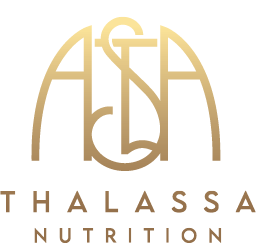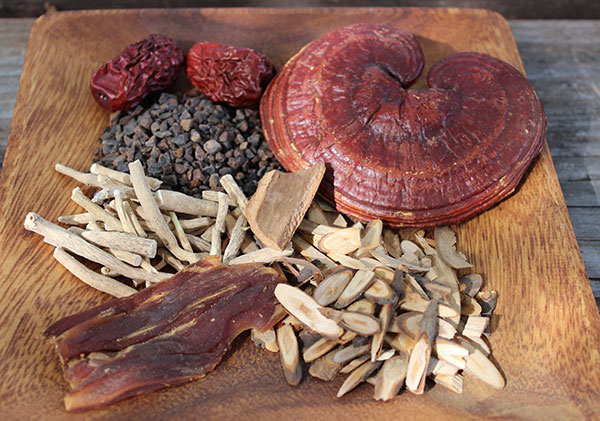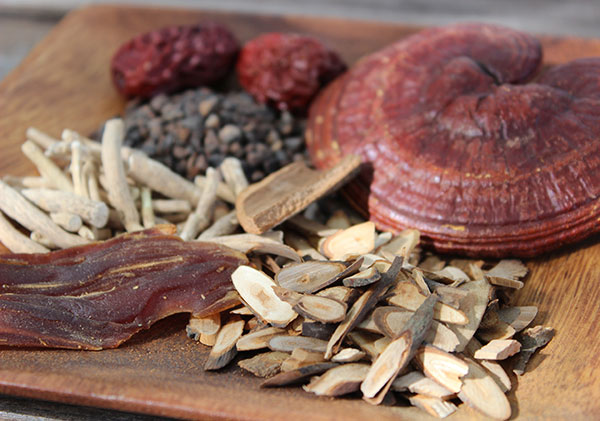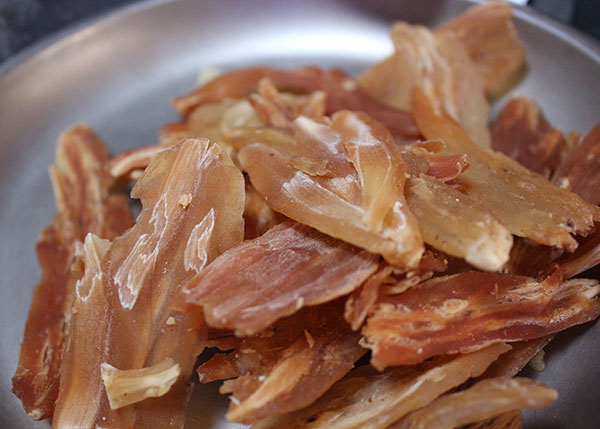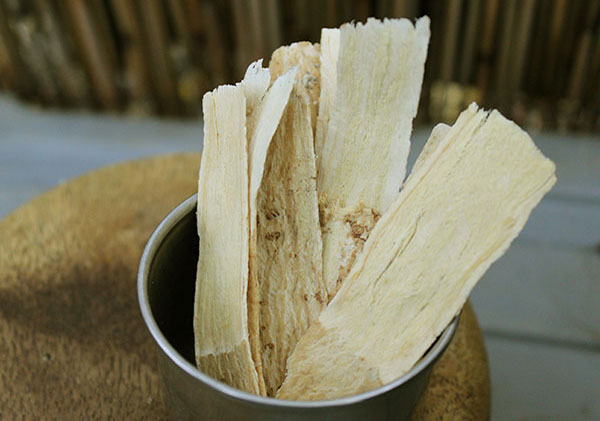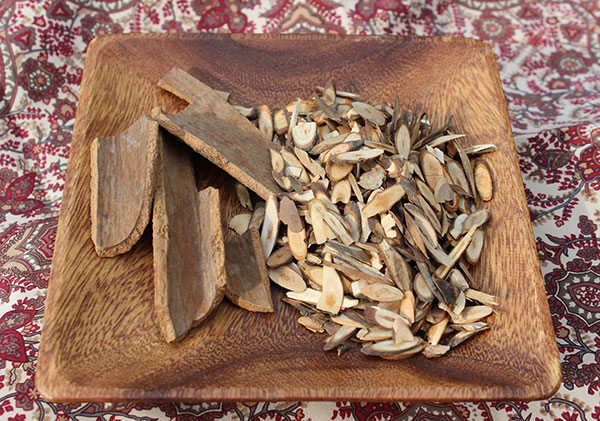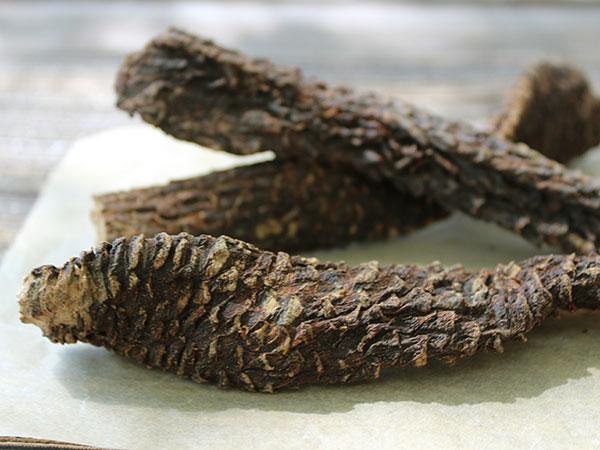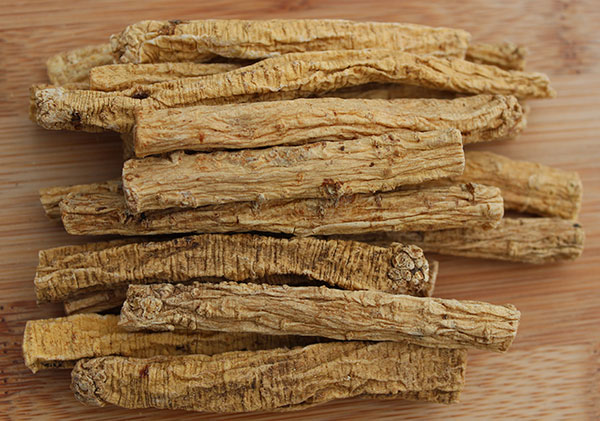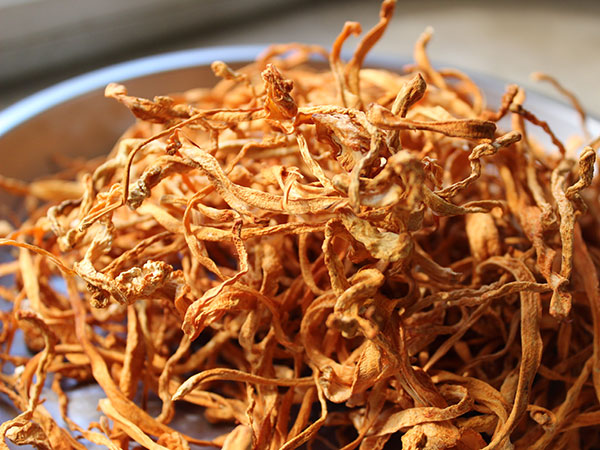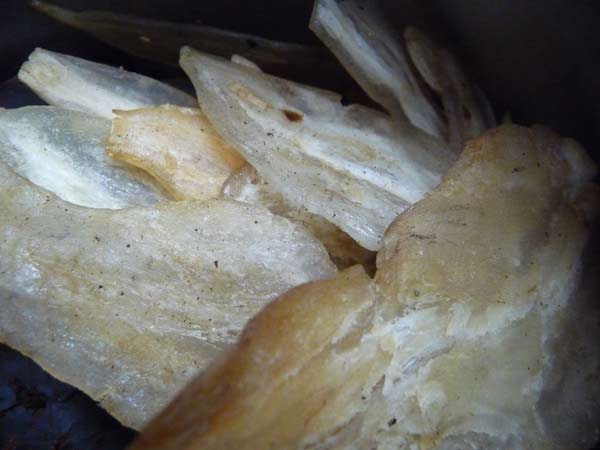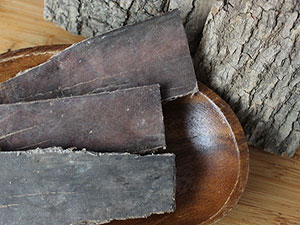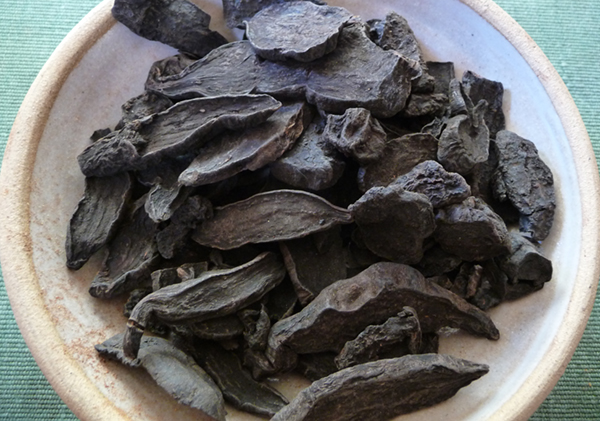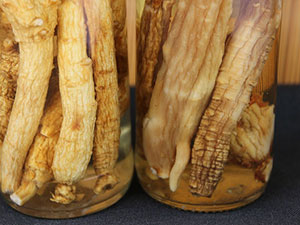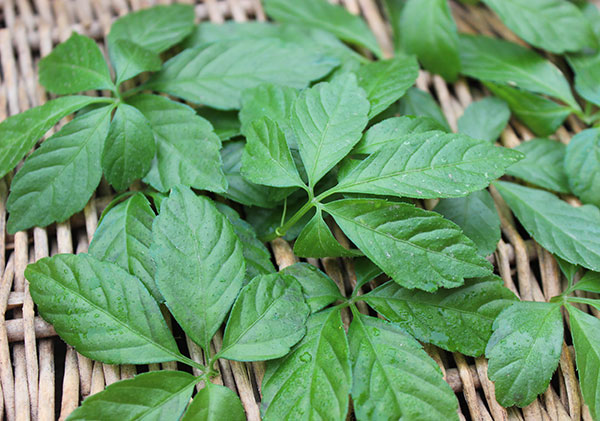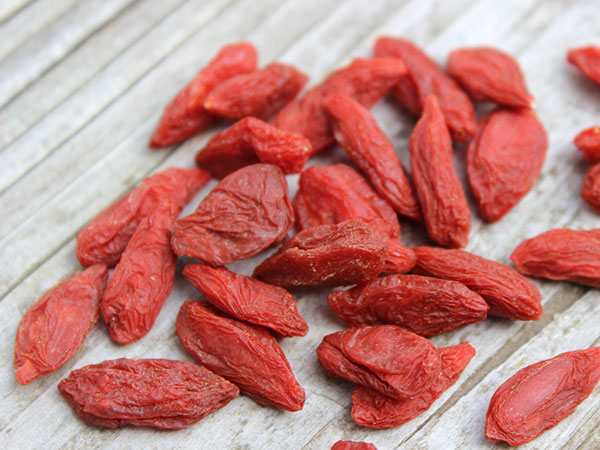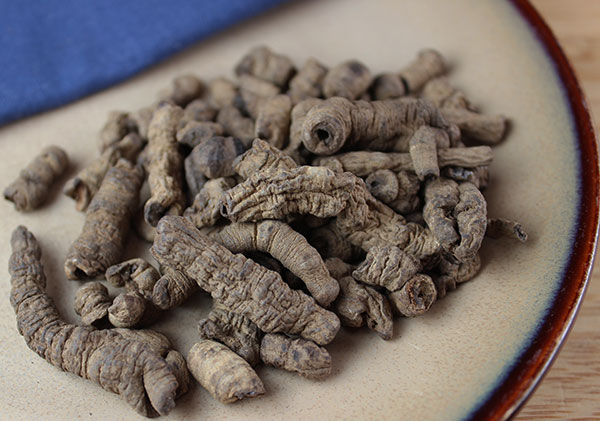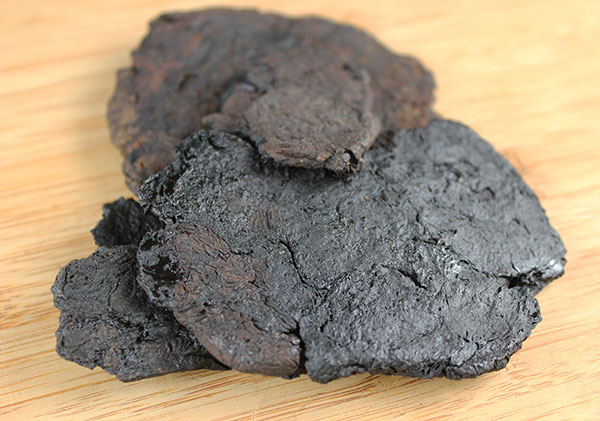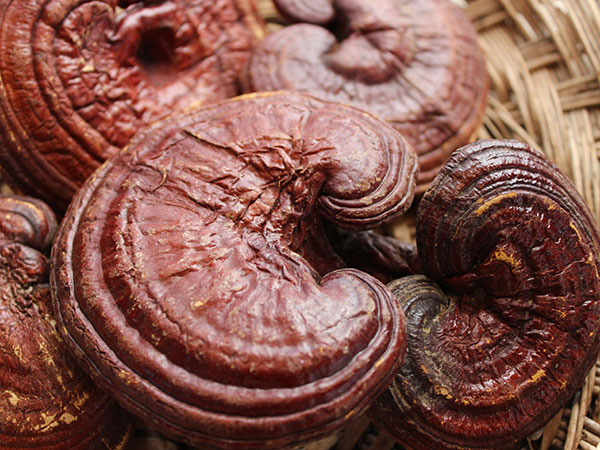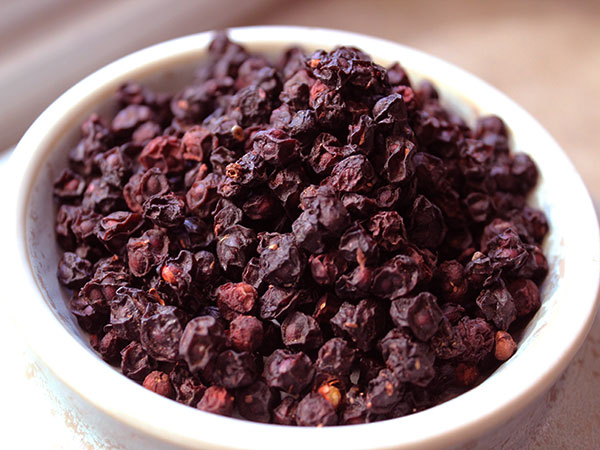Chinese Herbs, Rebuild with the Superior Tonics
When most people speak of “Chinese herbs” they are most commonly referring to the class of superior tonic herbs widely used in the Chinese herbal system. These are natural herbs taken as teas, patent formulas, powders or liquid extracts ideally tailored to help nourish or activate specific bodily systems.
Although these tonics are natural herbal remedies for many health conditions, they are not normally used medicinally to “treat” specific illnesses. Tonics are “tonifying” and work to build and strengthen our immunity so we are less susceptible to getting sick or vulnerable to what causes disease in the first place.
In other words, tonic herbalism is a preventative approach, emphasizing the promotion of health as oppose to the purging of disease once it has taken root.
Tonics are considered “foods” that can be used on a regular basis throughout the course of one’s lifetime. In fact, their effects tend to increase the more you use them, yielding cumulative long-term benefits.
This class of superfoods can be extremely valuable as dietary adjuncts to our overall well-being in ways that can’t be matched by most commonly consumed foods. Regarded as a major food group in Asian cultures, some popular herbs, like astragalus, jujube and goji, are often used in everyday meals, brewed into soups and cooked with grains or legumes for added nutritional fortification.
These very special herbal substances have long been respected and successfully used for several thousand years by Taoist masters. Associated with living a high quality life, they can help to enhance energy, physical strength, sexual vitality, mental acuity, spiritual wisdom and have also gained the reputation as life extending longevity herbs.
The superior class of Chinese herbs was first defined in the ancient herbal text, the Shennong Ben Cao Jing, about 2,500 years ago and includes approximately 52 top tonic herbs. Some of the most famous Chinese herbs known around the world come from this category of tonics, the most well-known of which is ginseng.
What are Tonic Herbs and How Do They Work?
Chinese herbs are superior tonic roots, barks, leaves, berries and mushrooms that are used to “tone”, through their adaptogenic nature, the major organ systems of the body. They are often referred to as adaptogens because they increase our body-mind’s ability to “adapt” to change and help us overcome daily life stress. They help to encourage resistance to trauma, anxiety and fatigue by allowing the body to naturally regulate itself, normalizing over-activity or under-activity of the organs and glands.
Each of the 52 major tonic herbs work specifically on different vital organ pathways to rebuild, rejuvenate or activate life-force energies. They not only bring about positive changes in one’s physical being but also greatly influence overall wellness on an emotional and spiritual level.
Tonics have a protective nature beyond that of other more common nutritive, sedating and cleansing herbs.
To enable the release of beneficial components, all of these herbs must be simmered in water as a tea, infused in an alcohol menstruum or must go through a special hot water extraction process. These three methods produce either a tea, a liquid solution or a powdered extract.
The Three Treasures of Chinese Herbalism
In Traditional Chinese Medicine, there are believed to be three different types of energy in the human body, known as “the three treasures.” These are Jing, Chi (Qi) and Shen. Each of the tonic herbs works on either one, two or all three of these elements to varying degrees. They are the primary foundations of the Chinese herbal system and frequently referenced to develop personalized tonic herb formulations.
1) Jing – This is the first treasure and is the energy that is passed onto you from your parents at the moment of conception. It is our deepest stored energy reserve or “root of our vitality” associated with kidney essence and the kidney-adrenal complex. Jing herbs are divided into two different categories: yin and yang. Yin herbs build and replenish depleted Jing energy and as a result are known to increase sexual libido and fertility. Yang herbs invigorate Jing essence and are highly rejuvenating to the reproductive system, skeletal structure and mental functions.
2) Chi – The second treasure is the energy we use on a daily basis that is created from the food we eat and the air we breathe. It is therefore most closely related to the lung and spleen/stomach organ systems. Chi is about movement of physical energy and is also divided into two separate categories of herbs: chi (energy) tonics and blood tonics. Chi tonics work to build sexual energy, creative drive and physical strength. They are fortifying to the respiratory, digestive and immune systems. Blood tonics nourish bodily tissues and help to build blood.
3) Shen – The third treasure resides in the heart and is linked with higher consciousness and awareness, often translated as “spirit.” Shen tonics work to impart a calm heart-centered nature and encourage a clear and peaceful state of mind.
As the great Chinese Taoist sage Lu Zi once stated:
“The human body is only Jing, Qi and Shen. These are the three treasures. These three treasures are complete as a human being. In order to attain true health and happiness, you must value the three treasures. Without the three treasures you cannot live long, and deep attainment cannot be reached in a lifetime. The three treasures must not be wasted. They must be nourished and protected as one’s life.”
Tonic Herb Formulations
Chinese herbs can be taken alone but are often consumed as blended formulations that consist of about 5-8 different major tonic herb varieties in varying proportions. Most all of the herbs are of more benefit when they are combined as a unit with other herbs. In Traditional Chinese Medicine herbs are used together to create a synergistic effect that works to most accurately balance any one particular diagnosis. These formulas are often modified over time to make them more suitable for subtle changing conditions of the patient.
Creating highly individualized tonic herb formulas is an ancient Chinese practice that requires a large degree of knowledge and education. There is definitely an art to blending different herbs to achieve specific health goals. Because there can be a myriad of different scenarios occurring within any one particular individual, it may be appropriate to seek the advice of a qualified tonic herbalist for additional assistance. This will allow the practitioner to tailor the most ideal formula and blend of herbs that can work to balance specific deficiencies and/or activate energies where needed.
This is not to say, in our opinion, that we can’t experiment with different herbs or read more about the unique properties of each in order to personalize our own preparations when appropriate.
We also recommend purchasing pre-formulated herbal extracts that are specific for certain health conditions. Our two favorite companies are Dragon Herbs and Jing Herbs. Both provide numerous tonic products that can be helpful for balancing many common health problems, like adrenal fatigue, sexual impotency, insomnia, joint inflammation and mental decline. Jing Herbs also offers a free 30 minute health consultation and analysis. Visit Jing Herbs Health Analysis for more details.
List of Top Chinese Herbs
This list of Chinese herbs is designed to lay a groundwork for broader understanding and help you become more familiar with the different herbs and their range of functions. We don’t list all 52 major herbs, but have selected among the top most common herbs traditionally used among Western herbalists.
Asparagus Root
Asparagus root (Asparagus lucidus) is one of the major Chinese herbs that works on all three treasures, supporting the lung, heart and kidney systems. It is most famous in TCM as a Shen tonic, specifically used to calm the heart and is often prescribed as a natural antidepressant because of its uplifting nature. It is also supportive as a Chi and Jing tonic working as a natural energizer for the lungs as well as a nourishing tonic for kidney Yin deficiencies. It is a particularly beneficial to women, taken to help increase fertility, sex drive and used in many beauty formulas as it is known to add luster to the skin. Asparagus lucidus is closely related to the Ayurvedic herb Shatavari (Asparagus racemosus) and is often used interchangeably.
Astragalus Root
Astragalus root (Astragalus membranaceus) is a primary Chi (Qi) tonic that has been long revered as one of the most potent energizing tonics available next to ginseng. Working directly with the spleen and lung organ systems, the root is warming to the body and promotes strong musculature, good posture and healthy respiratory, metabolic and eliminative functions. It is also well-known for its immune enhancing attributes, containing unique astragalosides an polysaccharides that encourage increased immune response. Astragalus contains a saponin called cycloastragenol which some health authorities believe is directly linked with what the Chinese call “Upright Qi.” This is thought to be the energy that counteracts the effects of gravity associated with the aging process.
Chinese Cinnamon
While it might seem somewhat unusual to call this common culinary spice a tonic, but the cassia variety is in fact considered a Jing herb. Also called Rou Gui, its hot energy and sweet pungent taste promotes good circulation and is helpful for balancing cooling herbs used in tea formulations. Both the bark and the twigs of the Chinese cinnamon tree (Cinnamomum cassia) with their warming, yet demulcent qualities, increase Yang energies, strengthen kidney Yang and are likewise considered mild sexual tonics. The cassia variety should be used in small quantities because of its potential liver damaging coumarin content that can be harmful when consumed in very high doses. This is not the case with Ceylon cinnamon, but ceylon is less tonifying to body.
Cistanche Stem
Cistanche (Cistanche deserticola) is the stem of a desert plant most famous as a potent tonic for enhancing sex drive and virility, often referred to as the “ginseng of the dessert.” It is specifically a kidney Jing herb that works to increase kidney Yang, offering a number of benefits that encourage optimal functioning of the reproductive organs and glands. Like eucommia and morinda, it is likewise strengthening the skeletal structure, especially the back and knees. Cistanche extracts also fortify the Yin element and are rejuvenating to the kidney-adrenal complex. The herb is made up of unique plant compounds such as phenylethanoid glycosides and cistanocides that contribute to its adaptogenic nature and range of actions.
Codonopsis Root
Codonopsis root (Codonopsis pilosula) is a mild, yet energizing, Chi tonic considered the “poor man’s ginseng” and often used in formulas as a ginseng substitute. It is not as strong as most ginseng varieties, which may be preferred by certain constitutions. Specific to the lungs and spleen, it helps to clear out excess mucus from the respiratory tract, but also moistens and nourishes the tissues and organs where needed. It is particularly well-known for providing greater balance to the major metabolic systems. It also acts as a blood tonic to detoxify and build blood and encourages a beautiful complexion. It is considered a wonderful immune boosting tonic root for those who are severely depleted or weakened after prolonged illness.
Cordyceps Mushroom
Cordyceps mushroom (Cordyceps sinensis or Cordyceps militaris) was described by herbalist Li Chih Shen to be equivalent to ginseng in its restorative qualities. As both a Chi and Jing tonic, it acts as a immune system modulator and natural energy stimulant. Also known for its effects at revitalizing the sex glands and reproductive system, the mushroom is considered a potent aphrodisiac and top tonic for increasing one’s sex drive. Cordyceps is known to be useful in recovery from adrenal depletion and helps increase lung capacity as well as oxygen utilization, making it a great tonic for improving athletic performance and aerobic workouts. Cordyceps is a fungus that originally grew off of insect bodies but today it is widely cultivated, usually on rice cakes.
Dong Quai Root
Dong quai (Angelica sinensis), also spelled dang gui or tang kuei, is a top blood nourishing tonic for both men and women, useful for revitalizing the blood and increasing circulation. As a Chi tonic it has been praised as the “woman’s ginseng” because of its reviving effects on the female reproductive system. It is a commonly used ingredient in many Chinese patent formulas for this purpose. Working primarily with the spleen and liver systems, it is used to promote menstrual stability in women, reduces PMS symptoms and is also recommended for those with anemia to restore blood balance. Dong quai is good for men as well, helping to build muscle by increasing blood flow to the tissues.
Eucommia Bark
Eucommia (Eucommia ulmoides) is a potent kidney tonic and Yang Jing herb most well-known for its ability to strengthen the skeletal structure of the body. It is specifically effective for joint and back pain as well as stiffness, especially in the knees, ankles and lower back. Eucommia, in many cases, can be used as a nutritional tonic for the elderly to ensure healthy cartilage and to guard against conditions like arthritis.Also considered a Yin Jing herb, it encourages flexibility in the ligaments and tendons and is known to help fortify and nourish the bones. Eucommia additionally supports healthy endocrine and sexual functions. It can be used by both men and women for such purposes.
He Shou Wu
He Shou Wu (Polygonum multiflorum), or also called fo-ti, is a tonic adaptogen, top superfood and premier Yin Jing tonic. It is one of the fundamental Chinese longevity herbs used extensively in TCM. According to Ron Teeguarden, “This herb has been consumed by almost every Taoist master that has ever lived.” It is very effective for replenishing kidney Yin and deep deficiencies associated with adrenal exhaustion. While acting as an energy restorative, it is simultaneously very calming to the nervous system. Containing high amounts of zinc and iron, it can be fortifying to the blood and also very cleansing to the liver. It is a highly respected sexual stimulant that is known to encourage fertility in both men and women. Fo-ti is traditionally “prepared” with black soybeans to activate its health enhancing constituents. We do not advise consuming herbal teas made with raw fo-ti root as they can be toxic to the liver.
Ginseng Root
Ginseng (Panax ginseng), is one of the most valued Chinese herbs used in Asia and known around the world for its extremely energizing and health promoting effects on the body. As a premier Chi tonic, ginseng is a warming and stimulating adaptogenic substance that is prized for its restorative and strength building compounds, called ginsenosides. Ginseng has tonifying effects on both the lung and spleen, the two organs responsible for extracting energy from the foods we eat and the air we breathe. Although primarily used to activate Chi, ginseng also works on all three treasures including Jing and Shen as well as Chi. There are many different types of ginseng roots with varying qualities depending on source and age of the root itself. American ginseng (Panax quinquefolius) is another variety that is often used as a sometimes preferred alternative because of its cooling nature.
Gynostemma Leaves
Gynostemma (Gynostemma pentaphyllum), or jiaogulan, is a popular Asian green leafy herb commonly prepared as a tea infusion. In Traditional Chinese Medicinal, gynostemma leaf has properties that are bitter and cool, and are beneficial to the lung and heart organ systems. It is believed to offer effects that clear heat, reduce inflammation, moisten the lungs as well as build adaptive energy. The leaves are the most potent part of the plant, containing triterpenoid saponins called gypenosides which are often compared to the ginsenoside saponins found in Panax ginseng root. Both the saponins and Gynostemma pentaphyllum polysaccharide content has shown to exhibit antioxidant, anti-inflammatory and antitumor activity. Teas and hot water extracts help prevent fatigue and are supportive to those with cardiovascular conditions, type 2 diabetes and obesity issues.
Jujube Dates
Jujube dates (Zizyphus jujube), or also called “red date”, are a Jing and Chi herb and blood cleansing fruit that are also known to regulate fluids, useful for either drying up excess mucus or moistening the tissues when needed. They are used to “clear the five openings”, which includes the eyes, ears, nose, throat and sinuses. Jujube is a great harmonizing adjunctive herb to use with other tonics in herbal formulations. They are especially appropriate for neutralizing the fiery nature of Yang herbs, like ginseng. The dried fruit is added to preparations for toning and purifying the stomach, acting as a mild laxative.
Licorice Root
Chinese licorice root (Glycyrrhizae uralensis) is a deliciously sweet and unctuous tonic that is known as “the great adjunct” for its harmonizing or supporting influence when used with other herbs. This is due to its effectiveness at enhancing the main properties of other herbs and is therefore a common ingredient in many Chinese patent formulas or herbal preparations. It is a Chi tonic beneficial to the spleen, stomach, kidney and lung systems. Licorice is also known for its detoxifying effects that help to neutralize and eliminate toxins from the body. These cleansing attributes are said to “allow for all energies to flow more smoothly.” Licorice helps to enhance digestion and its cooling nature can be effective as a natural anti-inflammatory. It is building to the muscles and nourishing to the adrenals.
Lycium Fruit
Lycium fruit (Lyciium barbarum), or also called lycii or goji berries, are a tonifying blood tonic and Jing herb, helpful for improving functions of the kidneys, liver and immune system. In Chinese medicine gou qi zi is considered a major tonic herb for restoring Yin Jing and can be a nourishing decoction to use with other tonic herbs, like fo-ti and rehmannia, in cases of kidney Yin deficiency, often associated with kidney-adrenal burnout. High in species-specific polysaccharides referred to as Lycium barbarum polysaccharides (LBPs), the berries are known to stimulate the production of superoxide dismutase, catalase and glutathione. Goji is comprised of carotenoids like beta-carotene and zeazanthin and are additionally a good source of iron. They are often used as a harmonizing ingredient blended with other herbs to increase their effectiveness.
Morinda Root
Morinda root (Morinda officinalis) comes from the same genus as noni fruit and is a Yang Jing tonic with similar properties to that of eucommia bark, it is also a very useful tonic for bone and joint health and is commonly combined with eucommia in herbal formulations for these purposes. It is influential as a strength building herb and an often added ingredient with other primal Jing preparations to improve, not only physical strength, but cognitive capacities. Morinda root is warming to the kidneys and is used to treat kidney Yang deficiency and those with specific sexual issues such as premature ejaculation, impotence and infertility. It is additionally supportive to maintaining a healthy cardiovascular system.
Rehmannia Root
Rehmannia (Rehmannia glutinosa), is a thick dark root that works specifically as a Jing herb, both as a blood and kidney Yin tonic. Often compared to fo-ti root for its ability to nourish Yin depletion, rehmannia is a prized longevity herb known to provide potent restorative, building properties that can have a beneficial effect on increasing fertility as well as sex drive. The root is used in tea decoctions for strengthening the tendons, bones and bone marrow in addition to supplying nutriments to the ears and eyes. Like fo-ti, rehmannia is always usually “prepared” to activate its health promoting compounds that are specific for Yin deficiency. Raw roots, however, are also used for other medicinal purposes.
Reishi Mushroom
Reishi mushroom (Ganoderma lucidum) tonifies all three treasures: Jing, Chi and Shen and is often referred to as the “great protector”, guarding against the effects that physical, immunological and mental stress can have on the body over time. When taken on a consistent basis it is said to profoundly strengthen immune functions, calm and protect the nerves and help us to positively adjust to potential anxiety in our lives. Reishi is a highly respected Shen tonic reowned as the “herb of spiritual potency” for its ability to open the heart and encourage a meditative state of being. Reishi’s active ingredients include water-soluble polysaccharides and peptidoglycans, in addition to more than 100 triterpenes, like ganoderic acid, depending on the strain and quality. (*)
Rhiodiola Root
Rhodiola (Rhodiola Rosea) is considered a sacred herb among Asian as well Russian peoples. It is an energizing Chi tonic adaptogen particularly famous for its beneficial influence on reducing the secretion of cortisol, the “stress hormone.” It is often viewed as a top herbal aid for relieving daily stress and anxiety for this reason. It is well documented for its capacity to increase mental alertness and concentration skills, often recommended for overworked individuals or those who sit at a desk or do computer work for extended periods of time. Useful as a restorative herb for treating adrenal fatigue, it has also been shown to help effectively alleviate conditions such as insomnia and depression. It is tonifying to the lungs, heart, and effective as a strong immune system modulator.
Schizandra Berries
Schizandra berries (Schizandra chinensis) are one of the most popular libido-enhancing tonics known in TCM, rejuvenating the kidney Jing and increasing fluids to the reproductive systems and sex glands. The berries work on all three treasures, Jing, Chi and Shen and also function as both a Yin and Yang tonic. Taking the herb for periods of time is said to lubricate the area just under the epidermis layer, providing for soft, supple skin. Subsequently, it has been used in China by women of the imperial court specifically to enhance and preserve a youthful appearance. Schizandra (also spelled schisandra) is a blood purifier that also enhances eyesight and range of vision. Many of the tonic effects to the skin and eyes are also a result of its liver cleansing qualities. It is known to be one of the only Chinese herbs to effectively enter all 12 meridians and is likewise comprised of all 5 tastes. The berries are commonly soaked and brewed as a “five flavor tea.”
When Not to Consume Chinese Herbs
These herbs are best taken when one is free of sickness and disease. Because major Chinese herbs are mostly building to the body rather than cleansing, it is also appropriate to stop taking tonics for a period time when undertaking cleansing or juice fasting protocols
According to Ron Teeguarden “It is a strict rule of Chinese tonic herbalism that the tonic herbs are not to be used when acutely ill, even if the acute illness is just a common cold. Correct any acute ailments before starting to use the tonics, and suspend their use if and when you catch a cold or other acute illness.”
Chinese Herbs and Pinyin Translations
Many times Chinese herbs are referred to by their Chinese/English names, not the “Western” names many use to identify them.
- American Ginseng – Xi Yang Shen
- Asparagus Root – Tian Men Dong
- Astragalus – Huang Chi (Qi)
- Cistanche – Rou Cong Rong
- Chinese Cinnamon – Guizhi and Rougi
- Codonopsis – Dang Shen
- Cordyceps – Dong Chong Xia Cao
- Coriolus – Yun Zhi
- Dong Quai – Dang Gui, Tang Kuei
- Eucommia Bark – Du Zhong
- Fo-ti – He Shou Wu
- Ginseng – Ren Shen
- Gynostemma – Jiaogulan
- Jujube Dates – Ta Tsao
- Licorice Root – Kan Tsao
- Lycium fruit (Goji berries) – Gou Qi Zi
- Maitake – Lian Hua Gu
- Morinda – Ba Ji Tian
- Reishi – Ling Zhi
- Rehmannia – Ti Huang
- Rhodiola – Hong Jing Tian
- Schizandra Berry – Wu Wei Zi
Precautions:
Most all tonic herbs are safe to use on a regular basis, but each may come with there own set of side-effects when used inappropriately or not balanced with other herbs in personalized formulations. Sometimes the assistance of a qualified Chinese herbalist is recommended to achieve highest health results. Avoid taking Chinese herbs when sick or undertaking a cleansing diet or fasting protocol. Consult your physician if pregnant, nursing, taking prescription medications or when a serious medical condition is an issue.
![]() 🍋 Lemons and limes are alkaline, not acidic as many people think
🍋 Lemons and limes are alkaline, not acidic as many people think ![]()
